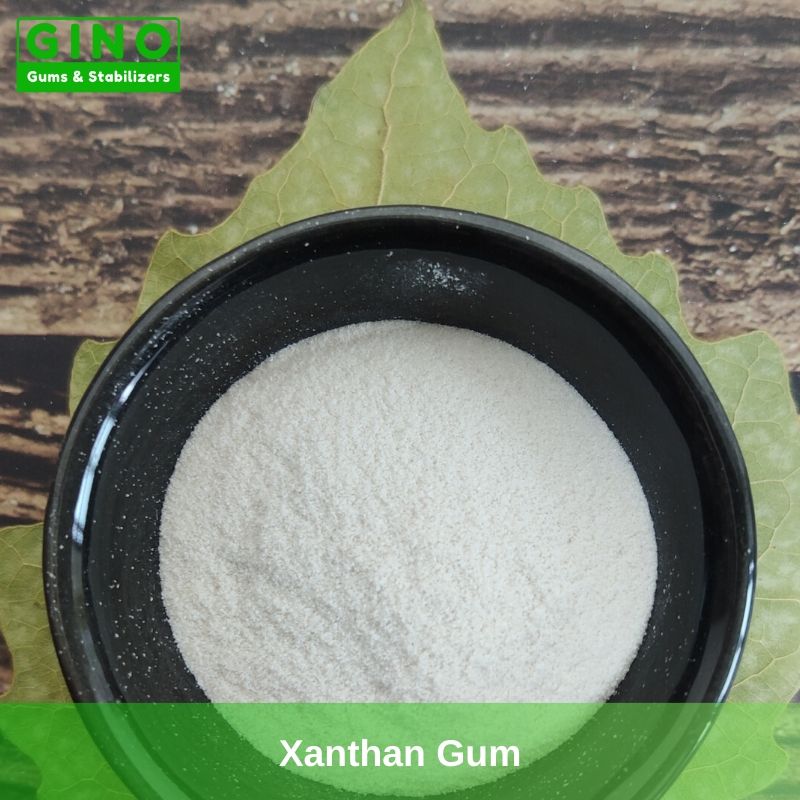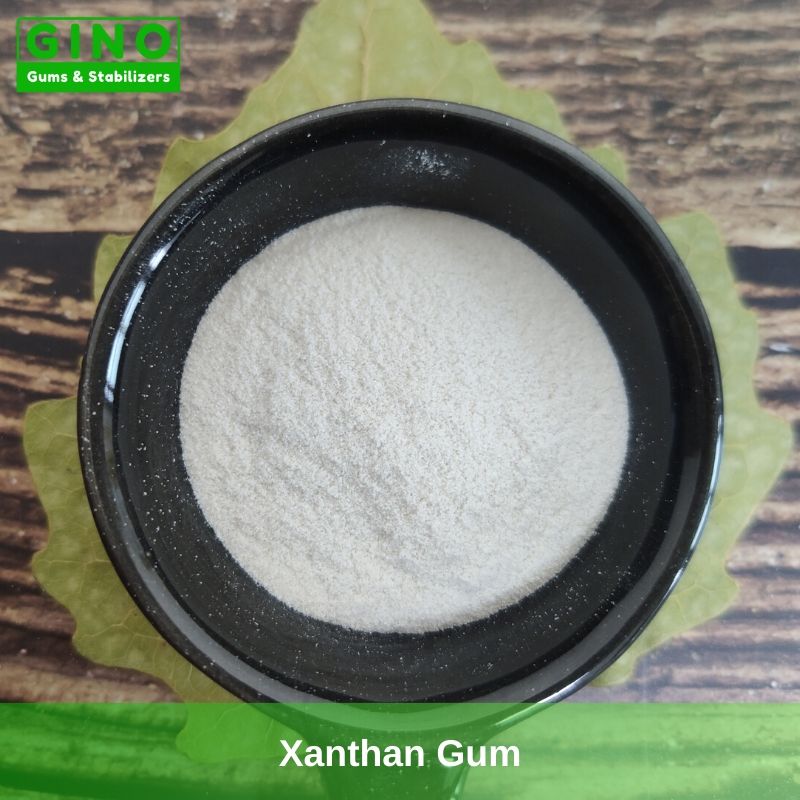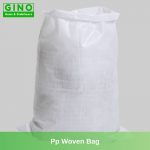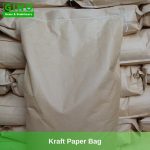Gomme xanthane
E415 : Une excellente gomme - Xanthan Gum Supplier in China
La gomme xanthane a été découverte pour la première fois dans les années 1960 par des chercheurs de l'Université de Californie du Sud. Département de l'agriculture des États-Unis (USDA) et commercialisé dans les années 1970. C'est un ingrédient utilisé comme épaississant, stabilisateur, émulsifiant et agent moussant dans l'industrie alimentaire et chimique.
En tant que fournisseur et exportateur de gomme xanthane en Chine, Gino se consacre à la fourniture de produits de qualité supérieure provenant de fabricants de gomme xanthane fiables. En même temps, nous pouvons offrir des solutions sur mesure parfaitement adaptées à vos besoins.
Si vous avez des questions, n'hésitez pas à envoyer un courriel à l'adresse suivante [email protected].




Gomme xanthane
| Catégorie | Épaississants, stabilisants |
|---|---|
| Numéro E | E415 |
| No CAS | 11138-66-2 |
| Code H.S. | 3913900000 |
| Origine | Chine |
| MOQ | 500 KG |
| Emballage | Cartons, sacs |
| Délai de paiement | T/T, L/C |
GINO_Votre fournisseur de gomme xanthane | Xanthan Gum Company
Qu'est-ce que la gomme xanthane ?
La gomme xanthane est un polysaccharide extracellulaire sécrété par le micro-organisme Xanthomonas campestris. Dans le commerce, elle est fabriquée par un processus de fermentation (le même que pour la gomme xanthane). gomme gellane), tandis que la plupart des autres hydrocolloïdes sont extraits de plantes.
C'est un ingrédient utilisé comme épaississant, stabilisateur, émulsifiant et agent moussant dans l'industrie alimentaire et chimique.
En quoi consiste la gomme xanthane ?
Il consiste principalement en une unité pentasaccharide répétitive composée de D-glucose, de D-glucuronide, de D-mannose, de pyruvate et d'acide acétique. Ces trois dernières substances sont présentes sous forme de mannose 4,6-pyruvate et de mannose 6-acétyle.
Le rapport entre les trois monosaccharides ci-dessus, Glucose : Mannose : Glucuronide est de 2:2:1.
Le degré de substitution du pyruvate et de l'acide acétique dépend de la composition du milieu de culture et des conditions de fermentation.
Processus de fabrication de la gomme xanthane
Dans le commerce, la gomme xanthane est produite à partir de bactéries purement cultivées par le biais d'un processus de fermentation aérobie en macération.
Les bactéries sont cultivées dans un milieu aéré contenant du glucose, une source d'azote et divers oligo-éléments.
Afin de fournir des semences pour l'étape finale de la fermentation, le processus d'accumulation de l'inoculum se déroule en plusieurs étapes.
Lorsque la fermentation finale est terminée, la boue est pasteurisée pour tuer les bactéries et la gomme xanthane est récupérée par précipitation avec de l'isopropanol ou de l'éthanol.
Enfin, le produit est séché, broyé et conditionné.
Contactez nous pour obtenir les informations détaillées Processus de fabrication et de production de la gomme xanthane.
Notre gamme de produits
- Quels types de gomme xanthane pouvons-nous vous fournir ?
Travailler avec nous | Choosing Your Right Xanthan Gum Supplier
Vous apprécierez toutes les qualités et formes de produits à base de gomme xanthane e415, y compris :
Par taille de maille
Par grade
- Gomme xanthane claire
- Gomme xanthane de qualité alimentaire
- Gomme xanthane de qualité pharmaceutique
- Gomme xanthane pour forage pétrolier
Nos emballages
Solutions d'emballage flexible | Custom Packaging
En tant que fournisseur professionnel et responsable de gomme xanthane, en plus de vous fournir des produits de qualité, nous nous efforçons de vous fournir des solutions d'emballage flexibles adaptées à vos besoins, et notre objectif est simple.
- Construire la notoriété de votre marque et développer votre propre marque.
- Promouvoir votre image de marque.
- Donner un coup de pouce à vos efforts de marketing promotionnel.
- Vous démarquer de la concurrence.





In Addition, You will enjoy
Méthodes de chargement flexibles, petites quantités commandées, délais de livraison rapides, service de suivi complet ...
Spécifications du tout-en-un
| Gomme xanthane de qualité alimentaire 80 mesh | |
| Caractéristiques sensorielles : | |
| Apparence | Poudre crème-blanche |
| Caractéristiques chimiques et physiques : | |
| Taille des particules (maille) | Min 95% passe 80 mesh |
| Viscosité (1% KCl, cps) | 1200-1700 |
| PH (1%, KCL) | 6.0- 8.0 |
| Rapport de cisaillement | ≥6.5 |
| Perte au séchage (%) | ≤15 |
| Azote total (%) | ≤1.5 |
| Cendres (%) | ≤15 |
| Acide pyruvique (%) | ≥1.5 |
| V1:V2 | 1.02- 1.45 |
| Total des métaux lourds | ≤10 ppm |
| Arsenic (As) | ≤3 ppm |
| Plomb (Pb) | ≤2 ppm |
| Caractéristiques microbiologiques : | |
| Nombre total de bactéries (cfu/g) | ≤ 2000 |
| Moisissures et levures (cfu/g) | ≤100 |
| Salmonelle ? | Négatif |
| Coliformes | Négatif |
| Gomme xanthane de qualité alimentaire 200 mesh | |
| Caractéristiques sensorielles : | |
| Apparence | Poudre crème-blanche |
| Caractéristiques chimiques et physiques : | |
| Taille des particules (maille) | Min 90% passe 200 mesh |
| Viscosité (1% KCl, cps) | ≥1200 |
| PH (1%, KCL) | 6.0- 8.0 |
| Rapport de cisaillement | ≥6.5 |
| Perte au séchage (%) | ≤15 |
| Azote total (%) | ≤1.5 |
| Cendres (%) | ≤15 |
| Acide pyruvique (%) | ≥1.5 |
| Total des métaux lourds | ≤10 ppm |
| Arsenic (As) | ≤3 ppm |
| Plomb (Pb) | ≤2 ppm |
| Caractéristiques microbiologiques : | |
| Nombre total de bactéries (cfu/g) | ≤ 2000 |
| Moisissures et levures (cfu/g) | ≤100 |
| Salmonelle ? | Négatif |
| Coliformes | Négatif |
Propriétés de la gomme xanthane
La gomme xanthane est facilement soluble dans l'eau froide et la solution présente un degré élevé d'écoulement pseudoplastique. Sa viscosité est très stable dans une large gamme de pH et de températures, et le polysaccharide est résistant à la dégradation enzymatique.
La gomme xanthane présente une interaction synergique avec les galactomannanes tels que la gomme de guar, la gomme de caroube et la gomme de konjac.
Il en résulte une viscosité accrue de la gomme guar, tandis que les gels thermoréversibles de la LBG et de la gomme de konjac sont souples et flexibles.
- Apparence
Poudre de couleur crème, au goût neutre, généralement fournie sur le marché avec des mailles de 80 et 200.
- Solubilité
Soluble dans l'eau chaude et dans l'eau froide, le pH de la solution de 1% est de 5,5-8,5 (25℃).
Insoluble dans l'éthanol.
Surtout, la solubilité de la gomme xanthane présente un autre point remarquable, à savoir :
La viscosité de la solution est stable et n'est pratiquement pas affectée par les changements de pH (pH3-11), de sels (10% KCl, 10% NaCl2 et 5% Na2CO3) et de température jusqu'à 90°C, alors que d'autres hydrocolloïdes (pectine, alginate de sodium) se décomposent dans ces conditions.
- Viscosité
Viscosité élevée à faible teneur
Une viscosité élevée peut être obtenue avec de faibles concentrations, et les quantités couramment utilisées pour l'épaississement des aliments sont de 0,5% ou moins. En général, la viscosité de la solution de 1% se situe entre 1200 et 1700cps, ce qui est environ 100 fois supérieur à la viscosité de la gélatine.
Stabilité
La viscosité de la solution est stable et n'est pratiquement pas affectée par les changements de pH (pH3-11), de sels (10% KCl, 10% NaCl2 et 5% Na2CO3) et de température jusqu'à 90°C, alors que d'autres hydrocolloïdes (pectine, alginate de sodium) se décomposent dans ces conditions.
Synergie
Il agit en synergie avec d'autres galactomannanes végétaux pour augmenter la viscosité, par exemple avec la gomme de guar (viscosité plus élevée), la gomme de caroube (forme des gels), la carraghénine et le glucomannane de konjac. Il agit également en synergie avec les amidons (pour empêcher la gélatinisation de l'amidon) ou les amidons alimentaires modifiés.
Dilution par cisaillement
La viscosité est élevée à un faible taux de cisaillement, faible à un taux de cisaillement élevé, mais une fois que la force de cisaillement est éliminée, elle revient à sa viscosité d'origine. Les propriétés pseudoplastiques jouent un rôle important dans la stabilisation, l'épaississement, la suspension et l'émulsification.
- Propriétés épaississantes
La gomme xanthane est principalement utilisée comme agent épaississant pour augmenter la viscosité des liquides sans altérer les autres propriétés de l'aliment, par exemple dans les boissons aux fruits, les concentrés de jus de fruits, les sauces et les assaisonnements pour salades.
- Propriétés d'émulsification
Il agit également comme émulsifiant pour empêcher la séparation huile-eau, améliorer la stabilité des protéines, empêcher le flottement des graisses et stabiliser les émulsions H/E grâce à ses groupes lipophiles et hydrophiles afin d'empêcher la précipitation des protéines. Ce type d'application est utilisé dans les boissons protéinées et laitières.
- Propriétés gélifiantes - Pas un agent gélifiant
En raison de sa force de gel faible ou presque nulle, il n'est pas utilisé comme gélifiant, mais il peut former des gels caoutchouteux firm avec la farine de caroube à des concentrations de 0,5%.
Avantages de la gomme xanthane pour la santé
Plusieurs études ont montré que la gomme xanthane peut réduire la glycémie et présenter d'autres avantages potentiels pour la santé, tels que la réduction du cholestérol, la perte de poids, les propriétés anticancéreuses, l'amélioration de la régularité, l'épaississement des liquides et la substitution de la salive. D'autres études sur l'homme sont nécessaires.
Utilisation de la gomme xanthane
- À quoi sert la gomme xanthane ?
La gomme xanthane dans l'alimentation
La gomme xanthane est efficace pour améliorer l'apparence, la texture et la saveur des aliments, améliorer la consistance et prolonger la durée de conservation.
En tant qu'excellent stabilisateur, il stabilise également les aliments et les aide à résister à différentes températures et niveaux de pH. En outre, il empêche les produits alimentaires de se séparer et garantit qu'ils peuvent s'écouler sans problème hors du récipient.
Voici quelques aliments courants qui contiennent de la gomme xanthane :
Les épaississants à base de gomme xanthane sont couramment présents dans les aliments suivants.
- Produits de boulangerie
- Vinaigrettes, desserts glacés
- Confiserie
- Gâteaux et desserts
- Produits laitiers
- Glaces
- Confitures et gelées
- Sauces et condiments
- Sauces à salade
- Produits à base de viande
- Biscuits
- Puddings
- Soupe
- Produits instantanés
La gomme xanthane dans les cosmétiques et les soins personnels
La gomme xanthane est également présente dans de nombreux produits d'hygiène et de beauté. Elle peut rendre ces produits épais, tout en s'écoulant facilement du récipient. En tant qu'agent de suspension, elle peut également mettre en suspension des particules solides dans un liquide.
La gomme xanthane est souvent présente dans les produits courants suivants.
- Shampooing
- Dentifrice
- Crèmes
- Lotions
La gomme xanthane dans les produits industriels
La gomme xanthane est utilisée dans de nombreux produits industriels en raison de sa capacité à résister à des températures et des valeurs de pH variables, à adhérer aux surfaces et à épaissir les liquides tout en maintenant un bon écoulement.
Les produits industriels courants qui contiennent de la gomme xanthane sont les suivants.
- Fongicides, herbicides et insecticides.
- Nettoyants pour carrelage, mortier, four et cuvette de WC.
- Peintures
- Fluides utilisés dans les forages pétroliers (gomme xanthane de qualité forage pétrolier)
- Colle à papier peint et autres adhésifs
Questions fréquemment posées
- Voir ci-dessous les questions les plus fréquemment posées sur la gomme xanthane.
De quoi la gomme xanthane est-elle dérivée ou fabriquée ?
Source d'hydrates de carbone (principalement amidon de maïs)
Xanthomonas, une bactérie naturelle que l'on trouve à la surface des feuilles des légumes verts.
Quelle est la structure de la gomme xanthane ?
Le xanthane est un polysaccharide à longue chaîne dont les éléments constitutifs sont le d-glucose, le d-mannose et l'acide d-glucuronique, dans un rapport moléculaire de 3:3:2, avec un grand nombre de chaînes latérales trisaccharidiques.
Comment utiliser la gomme xanthane pour épaissir la soupe ?
Il est très facile d'épaissir avec de la gomme xanthane. Il suffit d'ajouter une très petite quantité d'agent de mélange au liquide que vous souhaitez épaissir. Il est important de bien mélanger, sinon votre plat risque de s'agglutiner.
Comment utiliser la gomme xanthane dans les sauces (Sauces chaudes))
Pour les sauces, mélanger la gomme xanthane avec un peu d'huile avant d'ajouter le lait de soja ou de riz donne le meilleur goût et la meilleure texture, car cela donne à la sauce une richesse et une profondeur qui seraient normalement obtenues avec de la crème, du beurre ou des œufs. Plus vous utilisez de gomme xanthane dans le liquide, plus celui-ci devient épais.
Pour utiliser la gomme xanthane, vous devez l'ajouter à votre sauce au fur et à mesure que vous la remuez. Évitez de l'ajouter à un liquide immobile, car elle se solidifierait instantanément et rendrait votre sauce grumeleuse. Utilisez 1/8 de cuillère à café par tasse de salsa pour un épaississement léger et 1/4 de cuillère à café pour un épaississement important.
Comment utiliser la gomme xanthane dans la crème glacée ?
Stabilité, contrôle de la synérèse et viscosité constante pendant les cycles de congélation-décongélation
et le chauffage sont obtenus en ajoutant de la gomme xanthane à une variété de produits congelés.
En général, les stabilisateurs utilisés dans les crèmes glacées doivent avoir les fonctions suivantes.
Prévention de la perte d'eau (pendant le cycle gel-dégel)
Amélioration de la rétention d'eau du produit
Anti-fonte - efficace pour ralentir la fonte
Augmentation du taux d'expansion des produits
Texture lisse et sensation crémeuse en bouche
Prévenir la formation de cristaux de glace
Peut-on utiliser la gomme xanthane dans la pâtisserie ?
Absolument oui !
La gomme xanthane peut être utilisée dans l'industrie de la boulangerie (p. ex. pain, biscuits, muffins, gâteaux) aux fins suivantes :
- Pour donner du volume au pain
- Rend les miettes plus résistantes
- Augmentation de la rétention d'eau
- Offre un goût et une texture onctueux
Il ralentit ainsi le vieillissement de l'amidon et prolonge la durée de conservation des produits de boulangerie et des pâtes réfrigérées.
Il peut également être utilisé comme substitut aux œufs, en réduisant la quantité de blanc d'œuf sans sacrifier la texture et l'aspect moelleux. Il peut être ajouté aux pâtes à tartiner pour éviter la déshydratation due à l'absorption d'eau.
La gomme xanthane peut également être utilisée dans les pâtisseries sans gluten à la place du gluten pour lier la farine, ce qui est bénéfique pour les personnes atteintes de la maladie cœliaque.
Pouvez-vous me donner les recettes de la gomme xanthane ?
En tant que fournisseur professionnel de gomme xanthane, nous pouvons certainement fournir une assistance technique gratuite. N'hésitez pas à nous contacter pour obtenir la recette de gomme xanthane dont vous avez besoin.
La gomme xanthane est-elle sûre ? La gomme xanthane est-elle saine ?
Oui, il n'a pratiquement aucun effet secondaire et sa sécurité a été reconnue par la Food and Drug Administration (FDA) des États-Unis et l'Autorité européenne de sécurité des aliments (EFSA), ainsi que par le Comité mixte FAO/OMS d'experts des additifs alimentaires (JECFA).
La gomme xanthane est-elle mauvaise pour la santé ?
La FDA considère que la gomme xanthane peut être consommée sans danger en tant qu'additif alimentaire
La gomme xanthane est-elle casher ?
Oui, notre fabricant de gomme xanthane peut fournir un certificat Kasher.
La gomme xanthane est-elle halal ?
La gomme xanthane est un ingrédient halal populaire utilisé dans les aliments et les boissons. En tant que fournisseur de gomme xanthane, nos produits sont tous certifiés HALAL.
La gomme xanthane est-elle végétalienne ? La gomme xanthane est-elle végétarienne ?
La plupart des gommes xanthane (sans lysozyme de poulet ou lactosérum) sont végétaliennes et utilisées comme alternative végétalienne à la gélatine.
La gomme xanthane est-elle naturelle ?
Qu'est-ce qui est naturel ? La gomme xanthane se trouve-t-elle naturellement dans les aliments ? Non. La gomme xanthane est un additif alimentaire couramment utilisé dans les aliments transformés.
La gomme xanthane est-elle exempte de gluten ?
La gomme xanthane contient-elle du gluten, la gomme xanthane est-elle exempte de gluten ?
Oui, il est sans gluten et largement utilisé dans les aliments sans gluten car il ne contient pas de blé, de seigle, d'orge ou d'hybrides de ces céréales. En outre, il peut être utilisé à la place du gluten pour améliorer le goût des produits de boulangerie.
La gomme xanthane est-elle d'origine animale ?
Non, pas comme la gélatine, la gomme xanthane est produite à partir de bactéries purement cultivées dans le cadre d'un processus de fermentation aérobie et macérée.
La gomme xanthane contient-elle du maïs ?
La gomme xanthane est obtenue par la fermentation d'une source d'hydrates de carbone (principalement l'amidon de maïs) avec des Xanthomonas.
La gomme xanthane contient-elle du blé et du soja ?
Non, il ne contient pas de blé, de seigle, d'orge ou d'hybrides de ces céréales.
Quels sont les effets secondaires de la gomme xanthane ?
Il n'a pratiquement pas d'effets secondaires et sa sécurité a été reconnue par la FDA.
Quelles sont les valeurs nutritionnelles de la pectine ?
La pectine est une fibre et ne contient pratiquement pas de calories ni de nutriments.
- Produits apparentés
- Formulaire de contact
Besoin de trouver un fournisseur fiable de gomme xanthane ? Gino sera votre meilleur choix !
Remplissez les champs ci-dessous pour obtenir les derniers prix de la gomme xanthane.



